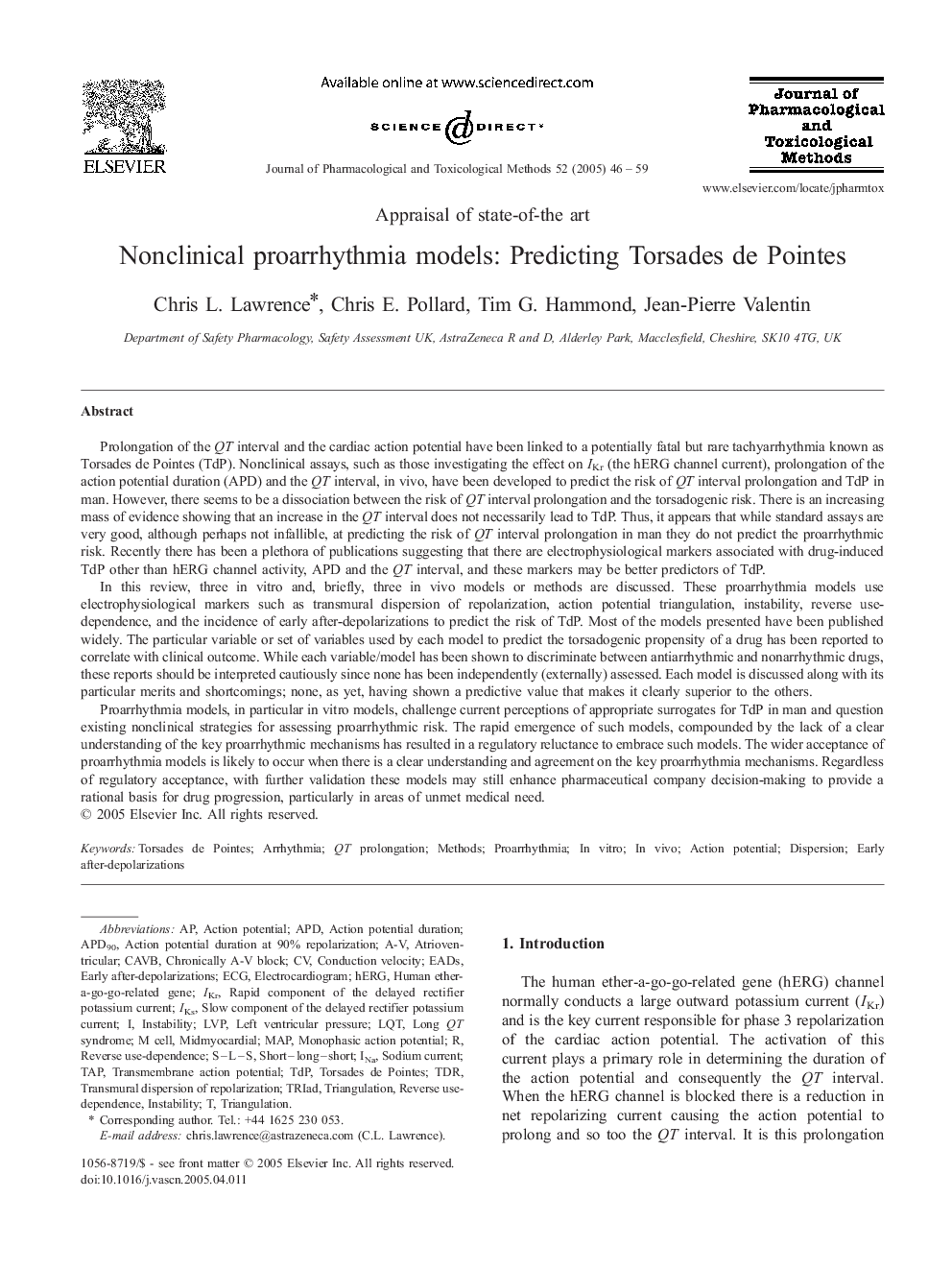| Article ID | Journal | Published Year | Pages | File Type |
|---|---|---|---|---|
| 9012239 | Journal of Pharmacological and Toxicological Methods | 2005 | 14 Pages |
Abstract
Proarrhythmia models, in particular in vitro models, challenge current perceptions of appropriate surrogates for TdP in man and question existing nonclinical strategies for assessing proarrhythmic risk. The rapid emergence of such models, compounded by the lack of a clear understanding of the key proarrhythmic mechanisms has resulted in a regulatory reluctance to embrace such models. The wider acceptance of proarrhythmia models is likely to occur when there is a clear understanding and agreement on the key proarrhythmia mechanisms. Regardless of regulatory acceptance, with further validation these models may still enhance pharmaceutical company decision-making to provide a rational basis for drug progression, particularly in areas of unmet medical need.
Keywords
rapid component of the delayed rectifier potassium currentTDPHERGLVPIKSA-VTDRAPDTorsades de pointesIKrAPD90EADsCAVBTransmural dispersion of repolarizationLQTTransmembrane action potentialINaQT prolongationArrhythmiaECGelectrocardiogramInstabilitysodium currentIn vivoIn vitroAtrioventricularConduction velocityM cellLong QT syndromeTriadTAPleft ventricular pressuretriangulationAction potential durationaction potential duration at 90% repolarizationMethodsmapaction potentialMonophasic action potentialDispersionProarrhythmiahuman ether-à-go-go-related gene
Related Topics
Health Sciences
Pharmacology, Toxicology and Pharmaceutical Science
Pharmacology
Authors
Chris L. Lawrence, Chris E. Pollard, Tim G. Hammond, Jean-Pierre Valentin,
